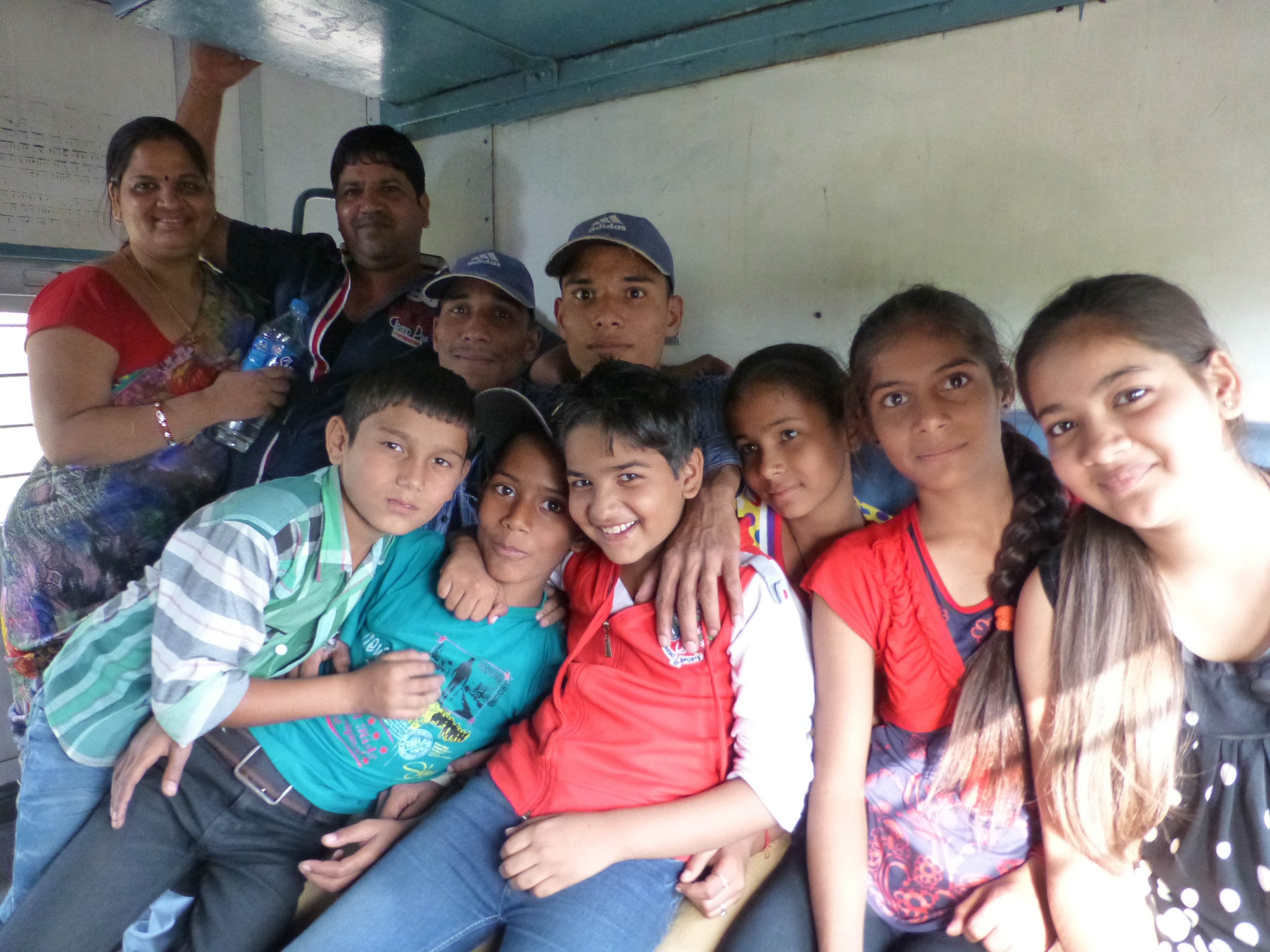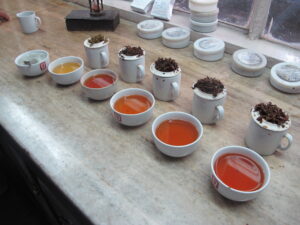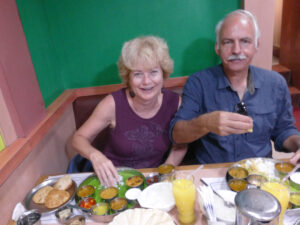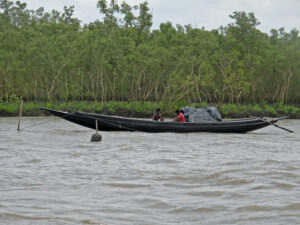This is the third set of profiles of people we have met in India. In this post, meet two people for whom language differences made little difference.
(For the previous profiles, click Profiles 1 or Profiles 2)
Common Tongue: Monk in Ancient Monastery
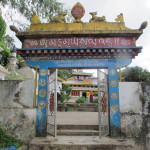
A large man about 35 stood up as we entered the wrought iron gateway to the monastery’s compact grounds. He looked like he once played rugby though now he was dressed in a somewhat different uniform, the yellow and saffron of Buddhist monks in the north of India. He had been sitting on a bench by the stony lane with a more diminutive monk and a secular local.
We were in between visits to several elaborate, large monasteries in Sikkim, and had stopped at tiny Yung Drung Kundrak Lingbon near Ravengla for a quick look at the seat of what may or may not be one of the oldest Buddhist sects, the Bons. The Bons claim their derivation back to Buddha’s own time and before the spread of Buddhism into Tibet.
He introduced himself and asked the usual questions we get from locals as we walk about, questions that all too often had alerted us to a tout who wanted to bond merely to sell us something. Still, he was a monk. “What is your name? Where are you from?” We answered, asking him the same. He came from a distant village in Sikkim.
He offered us a tour. He showed us the prayer hall for the monks, one of the smallest we had seen in the north of India, and explained a bit about the iconography and statues. Though already familiar with much of this from our extensive visits to monasteries, we struggled with the details of his tour, mainly because of his limited, heavily accented English and our lack of his native Nepali tongue.
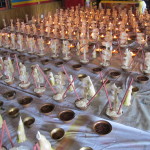
We did understand what we were looking at when he pointed out the mother-father tantric images, the many reincarnations or successors of the sect’s lama and female incarnations of Buddha. We recognized the narrow, rectangular block printed sheets comprising the prayer books from which the monks chanted. Neither of us could parse out his historical account of the sect. We understood at least it was supposed to be millenia old. We marveled at the rows and rows of yak butter votives made by the devout for an upcoming festival.
As expected, he asked for a donation; none of our gracious hosts, however religious the setting, tours us for free. We put some money in the donation box. But then he surprised us. “Can you help me minute?” he asked. How, we wondered, steeling ourselves for another donation request. “I know people smart in America; not so much here.” He pulled out his smartphone, an Android device with a sizable screen.
Now we had already seen that monks are not strangers to modern technology. They may spend many hours praying from ancient texts or studying and arguing religious doctrine. They may abstain from many worldly things. But, in the monasteries and touring temples, we have seen many using i-phones to snap photos of Buddha statues and other sites. Or consulting their Mac laptops. Or watching TV in their dorms. Even in MacLeod Ganj, the home of the Dalai Lama, monks are driving around town or flagging auto-rickshaws while chatting away on their mobiles.
But what did he want us to do?
In the flow of incomprehensible words, we heard “Facebook.” Did he want to friend us, we thought, as the familiar blue and white look of the site opened on his screen. We beckoned to our driver for some help in figuring out what he wanted us to do, when by gestures and pointing to the screen we finally realized he was seeking our help in how to save and then share pictures he received via Facebook.
His family and friends, we began to understand, kept posting pictures of relatives, and he wanted to download them. He showed us some: boys, girls, other monks, a sister back in his home town.
OK, we can help with that. Maybe not really smarter in technology, as we might have admitted had we enough Nepalese to say so, but just a bit more experienced. At least we shared the common lingo of phone technology.
So with some gesturing on our own and a few screen pokes, we showed him what to do.
He beamed, so appreciative. “Sank you, sank you.” He shook hands with us, vigorously…like a saffron- and orange-colored rugby player.
Passing Time: Mother and Family on a Slow Train
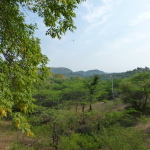
When we entered the train car, the buxom, middle-aged woman was alone, napping in her colorful sari on one of the two benches of the open-air sleeper car. As we settled on the opposing bench next to the barred window, she arose and surveyed us.
We were aboard a slow local train easing from one agricultural village to another because it wound for an hour through the bumps and ravines of the Aravali Hills of Rajasthan, a very attractive landscape. We had started at Phulad, a typical village train station. The low-slung building had a cool, dark interior filled with old switching equipment and desks in one room, alongside a waiting area in another. Inside, the station manager was lying atop one of the desks in a t-shirt, snoring deeply in the heat of the afternoon. In front of the ticket counter to the side, some farm animal had left a pile of dung we needed to step over to buy our tickets.
Along the tracks, a bony, old farmer in white herded his goats. A few villagers crossed the tracks from one part of town to another. Only one other person was on the surprisingly lengthy platform.
After we bought our 10 rupee tickets, we were invited to join the station master in a traditional Diwali treat, a bit of sweet dessert and an offsetting bit of salty snack. One of the men sharing the treat explained all this in English and helped along the usual chat about who we were, why we were there, where we were going – and unusually about the oddities of American politics.
The train we awaited then arrived for a 30 minute stop to reverse direction. We mounted as the engine motored back and forth, looking at several compartments for a seat. And then we were on the bench opposite the sleeping woman.
Almost immediately our napping companion was joined by members of her family, whose sandals were strewn about the compartment. “My daughter,” the woman said proudly in about the only English she knew, nudging the teenager who sat down beside her. The daughter gave off slightly annoyed looks like an LA valley girl. Her mother added, “Speak English,” as an encouragement for her to do so, as much as a source of pride.
We noticed at last the two lovely young girls lying on the upper sleeper pallet above the mother, eyes wide open in amazement at us and grinning non-stop, bemused at our presence.
We realized we had displaced her family members in taking two of the six seats and wondered aloud and in gesture if we should leave. “Kya tiik heh?” “Is it OK?,” we asked with the little Hindi we recalled after months traveling in parts of India where other languages dominate. The daughter assured us we should stay. As typical Indian hosts with guests, they would do no less in our experience. And, truly, we foreigners were a big attraction for the children and other adults.
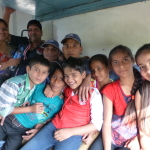
We settled in. A large, dour and worn man at the far side of our bench proved to be the woman’s husband. He kept moving restlessly to and from the open doorways at the end of the train. Joining us as well were two lanky young men of about 20, somehow connected to her family and looking strangely alike with similar caps and shirts, and only different because one sported a large white watch. They too wandered back and forth to the open car door. Two girls and two boys had squeezed in amongst us after vacating the next compartment. One boy, she gestured, was hers. He seemed shy at first, but after a while turned into the family clown and socializer. Yes, we noticed and gestured, he and the daughter looked like her. But who were the young men and whose children were the other girls?
With twelve of us now packed into a compartment for six, the train ambled through switchbacks within the delightful landscape. We kept looking out the window; the family kept looking at us, giggling and smiling. At one point the twin with the watch pulled out a huge smartphone and reviewed some videos: family members dancing crazily with some farmers, some shots of the moving train, etc.. In the few tunnels we passed through, everyone yelled and whistled gleefully, with lots of prodding and tickling in the dark. Every so often, thru the daughter, someone would ask those familiar questions about us, our country, our names.
Occasionally we exchanged knowing glances and meaningful gestures with the mother about some childish act or trifle around us. Feeling quite friendly, we offered to take their photo en famille, and showed the results around. But mostly we took the time to look at what interested us – inside the car or out.
After about an hour, the mother was worried we did not know where to dismount from the train. Her daughter asked where we were going. “Khambli Ghat,” we answered – the first stop atop the hills. They were going to Ambli, another small town hours away, for reasons we never figured out – perhaps their return home. As we neared the stop, the mother gestured and nudged her daughter to make sure we were prepared. Everyone else rustled around in anticipation.
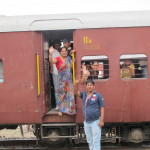
As the train pulled into that simple station, we rose and said goodbye. The children stretched out their hands for a slap of fingers. The father reached out to shake hands. All shared greetings: “Namaste. Goodbye. Phir milenge.” We stepped gingerly off the train.
Looking back, we saw the mother standing in the open car door waving, along with her husband, and the children waving from the windows. Farewell greetings once again across the platform. Then we left the station.
(Also, for more pictures from India, CLICK HERE to view the slideshow at the end of the India itinerary page.)


